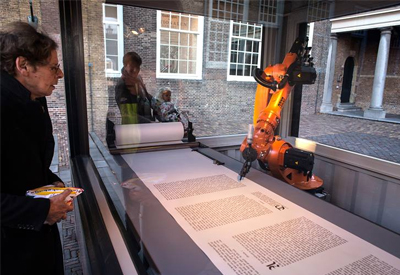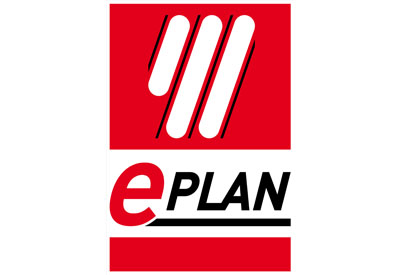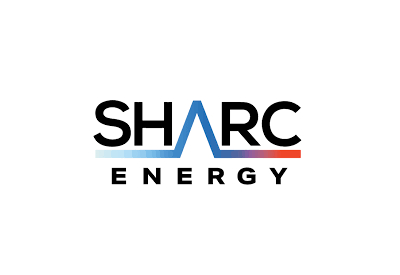A KUKA robot becomes a part of Dutch cultural history

July 2, 2019
The art group ‘robotlab’ installed a KUKA robot in the city of Dordrecht. There, it is transcribing the Bible. The art project is part of the festivities for the 400th anniversary of the Synod of Dordrecht – a seminal event in the history of Dutch Protestantism.
The art group has existed since 2000. Their work examines the relationship between humans and robots. Since the group’s inception, Matthias Gommel, Martina Haitz and Jan Zappe have organized more than 100 exhibitions. The current ‘bios [bible]’ project is exhibited in the Dutch city of Dordrecht. The centerpiece there is a KUKA robot from the KR CYBERTECH series.
The KUKA robot independently transcribes the Bible in Dutch. To carry this out, it has been equipped with a specially developed spring-tension pen holder. It has an integrated calligraphy fountain pen which enables particularly beautiful writing. The fountain pen is connected to an external ink system. This ensures a continuous supply of ink and uninterrupted writing.
The Bible text is loaded onto the controller in the form of special, computer-generated files. The writing style used by the KUKA robot from the KR CYBERTECH series is a calligraphy font developed especially for this project that was also specially generated and integrated into the controller software. The KUKA robot fills several scrolls with writing – each with a length of 200 meters. The full work of writing takes nine months.
Robot gives a nod to monks from the Middle Ages
The Bible-transcribing robot carries out its work in the context of the 400th anniversary of the Synod of Dordrecht. Dordrecht was the site of an important assembly from 1618 to 1619 during the Reformation in the Netherlands. At that time, the decision was taken to translate the Bible from Greek into Dutch. The work of transcription, at that time, was still often carried out by monks. Now, 400 years later, a robot is carry out this monotonous and highly detailed work.





